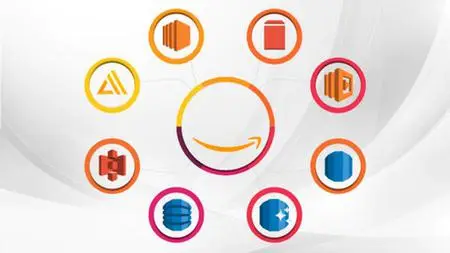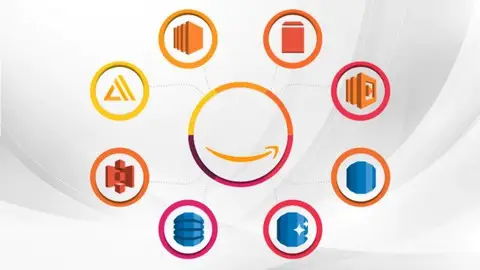AWS Certified Developer - Beginner to Expert Part-II
Published 06/2022
Genre: eLearning | MP4 | Video: h264, 1280x720 | Audio: AAC, 48.0 KHz
Language: English | Size: 1.96 GB | Duration: 34 lectures • 3h 21m
Published 06/2022
Genre: eLearning | MP4 | Video: h264, 1280x720 | Audio: AAC, 48.0 KHz
Language: English | Size: 1.96 GB | Duration: 34 lectures • 3h 21m
AWS Certified Developer - Beginner to Expert Part-II
What you'll learn
Simple Storage Service (S3), and Glacier and CloudFront, along with other AWS storage options
Monitoring with CloudWatch
AWS DynamoDB – A NoSQL Database Service
Amazon Simple Queue Service (SQS), and have an overview of CloudFormation
Requirements
Access to Smart Phone / Computer
Good Internet Speed (Wifi/3G/4G)
Dedication & Confidence
Description
This course starts with a quick introduction to AWS and the prerequisites to get you started. It gives you a fair understanding of core AWS services and the basic architecture. Next, you get familiar with Identity and Access Management (IAM) along with Virtual Private Cloud (VPC). Moving ahead, you will learn about Elastic Compute Cloud (EC2) and handling application traffic with Elastic Load Balancing (ELB). We will also talk about Monitoring with CloudWatch, Simple Storage Service (S3), Glacier and CloudFront, along with other AWS storage options. Next, we will take you through AWS DynamoDB – A NoSQL
Database Service, Amazon Simple Queue Service (SQS), and have an overview of CloudFormation. Finally, you will understand Elastic Beanstalk and go through an overview of AWS lambda.
At the end of this course, we will cover enough topics, tips, and tricks along with mock tests for you to be able to pass the AWS Certified Developer - Associate exam and deploy as well as manage your applications on the AWS platform. With the rapid adaptation of the cloud platform, the need for cloud certifications has also increased. This is your one-stop solution and will help you transform from zero to certified. This course will help you gain technical expertise in the AWS platform and help you start working with various AWS services.
What this Course covers
Chapter 9: Other AWS Storage Options, touches upon AWS Storage Gateway, which is a
network appliance or a server residing on a customer premises. It provides an overview of
AWS Snowball, which is a service that accelerates transferring large amounts of data into
and out of AWS using physical storage appliances. It also provides a basic understanding of
AWS Snowmobile, which is an Exabyte-scale data transfer service used to move extremely
large amounts of data to and from AWS.
Chapter 10: AWS Relation Database Services, provides an understanding of AWS Relation
Database Services (RDS). It explains different types of engine supported by AWS RDS and
how to efficiently and effectively create and manage RDS instances on AWS cloud.
Chapter 11: AWS DynamoDB – A NoSQL Database Service, describes various components of
DynamoDB with the best practices to manage it.
Chapter 12: Amazon Simple Queue Service, provides an understanding of what SQS is and
how to create and manage it with relevant examples.
Chapter 13: Simple Notification Service, talks about fully managed messaging service that
can be used to send messages, alarms, and notifications from various AWS services such as
Amazon RDS, CloudWatch, and S3 to other AWS services such as SQS and Lambda.
Chapter 14: Simple Workflow Service, provides a basic understanding of SWF, its various
components, and how to use them.
Chapter 15: AWS CloudFormation, provides an overview of the AWS CloudFormation
service. CloudFormation templates provide a simpler and efficient way to manage your
resources on AWS cloud.
Chapter 16: Elastic Beanstalk, gives an introduction to Elastic Beanstalk and describes how
to create and manage applications using the service.
Chapter 17: Overview of AWS Lambda, provides an overview of Lambda and describes how
it runs code in response to events and how it automatically manages the compute resources
required by that code.
Who this course is for
Want to become certified AWS Developer



